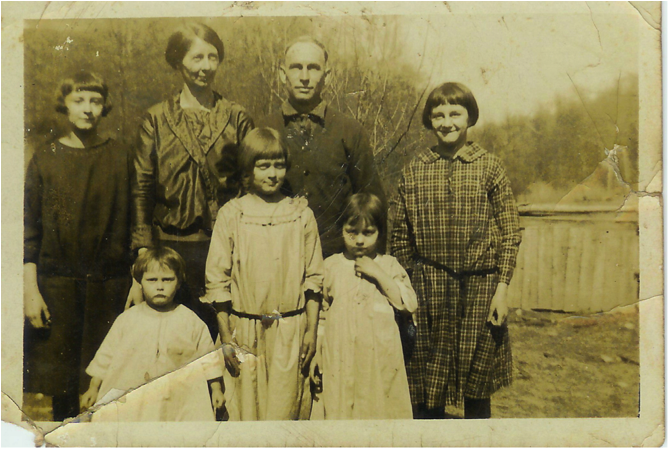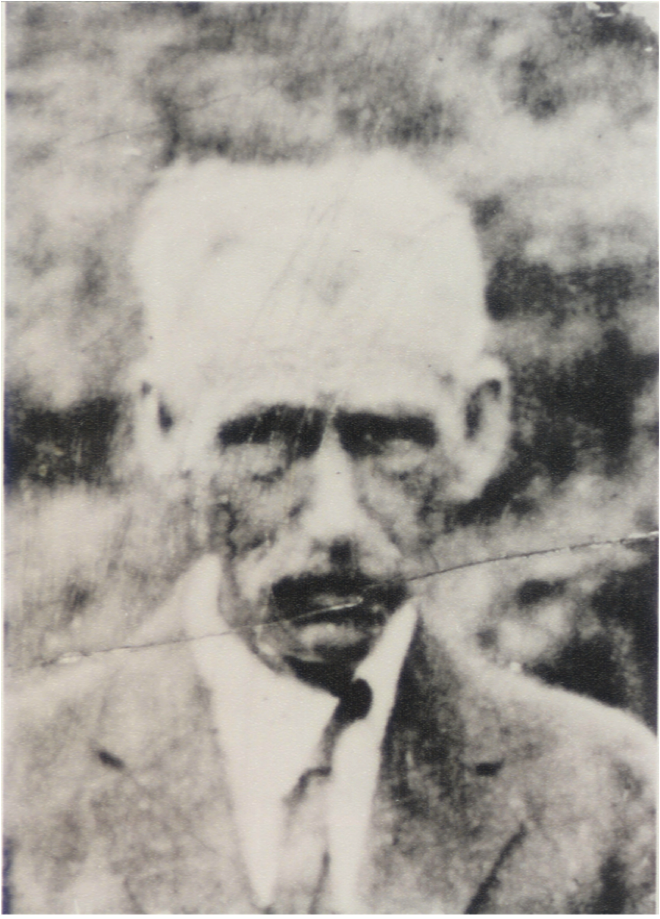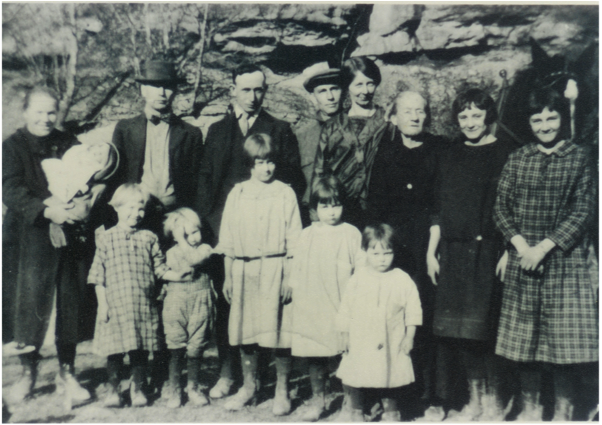
The Paul Family
West Virginian Resilience.
Sod, West Virginia.
The 1918 Flu and the Paul Family in Sod, West Virginia
In the small village of Sod, West Virginia, in the fall of 1918, the influenza pandemic hit the family of Joseph and Mary Jane (Griffith) Paul and their young adult sons Omer (about 29, b. 1889 ) and Wilmer (about 25, b. 1893), who lived at home with them.

My grandmother Dessie and her sisters Daisy and Birdie were little girls (ages about 7, 6, and 4) and were the daughters of another Paul son, George Emory Paul, who lived near his parents and brothers in a wooden plank house with his wife Belva Antoinette (Pauley) Paul, along with their three daughters (younger sisters Madeline and Opal weren’t born yet). The three oldest Paul sisters would go on to tell about their memories of their grandparents’ and uncles’ experiences with the flu. First off, they told how they and everyone around always believed Grandma Mary Jane Paul managed to stave off the flu by chewing tobacco. She kept tobacco in her mouth, and although the whole house was infected, she wasn’t infected though she was the main caretaker.

Also, they told how that their mother Belva would take food down to Grandma Paul’s house to help feed Grandma Paul and her sick patients. It was Belva’s custom to leave the food on Grandma Paul’s front porch so as not to expose her own family to the flu.
My grandmother’s sister Birdie remembered and told the story of how one day her mother Belva carried food to Grandma Paul’s house with her three daughters in tow. Suddenly, Grandma Paul opened the door to get the food, and Birdie, being just a child, tried to run into the house. Her mother Belva grabbed her arm and pulled her back outside, and, as Birdie always said, “saved me that a way from getting the flu.” Birdie always told this story with a sense of hushed somberness.
In the memory of the girls, the flu—or “fru,” as they sometimes said, pronouncing it as one of their neighbors did—was a serious topic.
Their Grandpa Joseph Paul died of the flu in October 1918, but the adult sons seemed to pull through the ordeal, at least, initially. Everyone rejoiced to see their recoveries. Wilmer, however, who had a long convalescence, eventually succumbed. The sisters told how that Wilmer finally gained the strength through the winter to sit up. But someone opened a window, or left a window open while he was sitting nearby. The sisters (and likely their parents) believed the draft from the window might have been what caused the surprise relapse, and ever after, they discouraged everyone from sitting in the draft of a window or door, saying, “You’re liable to take the ‘fru.’”

Although this is a story I heard repeated, one of my cousins remembers that her grandfather, the fourth Paul son–William Elmer Paul (who had married his wife Brookie in August of 1918 and also lived on the property) saw the signs that his brother Wilmer was in danger. He rode off to fetch the doctor at Ivy Branch. By the time he returned with the doctor, it was too late, and Wilmer had died.
Wilmer’s death was a big blow to the family because they believed they had nursed him through the influenza, and they believed, with the coming spring, he would live. We have a photograph of the Paul brothers—who played for the community baseball team. Someone has gone through and labeled their names—Elmer, George Emory, Omer, and Wilmer–and estimated the year of the photo to be 1918. If the date is correct, this would likely have been the spring or summer before the flu struck.
We also have photos of Grandma and Grandpa Paul—though it’s unclear whether or not Grandma Paul has tobacco in her mouth.
Curiously, a casual search of the databases of three local cemeteries (one of which is where the Pauls are buried) reveals only a handful of people with death dates of 1918 or 1919, so we wonder how widespread the flu was in Sod, and/or if it was just the case that the flu was survived by many of those who had it.

Certainly, the Paul family heeded the message to quarantine. Moreover, the memories of the flu stayed with those in the family. As a precaution against illness, my grandmother made my father wear an asafoetida bag around his neck when he was a little boy. He recalled how dirty and smelly the bag was and rejoiced when his paternal uncle took it off his neck and threw it away.
As a sidenote, my grandmother Dessie’s maternal grandparents John and Diannah Pauley lost their young daughter Dorthy (b. 8-11-1909) to a mysterious illness in May 1918. A later newspaper obituary clipping for Diannah Pauley herself reveals especially Diannah’s grief at losing her nine-year-old daughter. We have sometimes wondered if this death was brought about by the early wave of influenza that swept through in the spring, but it may have been unrelated.
Contributed by Lisa Graley, Jan. 14, 2020.
Editor’s Note: Variously spelled asfidity, asfedity, asafetida, asphidity, and assafedity, an asafoetida bag as mentioned above is a folk remedy and preventative. It is a fabric bag containing pungent herbs, including resin from the root of the asafoetida plant, and is traditionally worn hanging from the neck under a person’s clothing.
